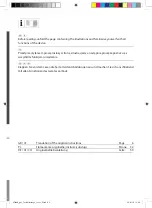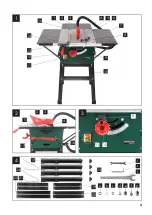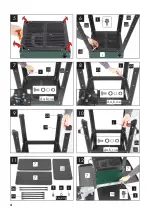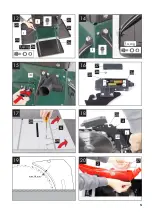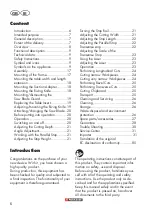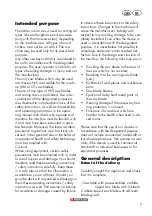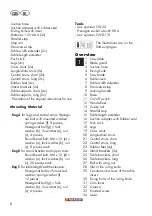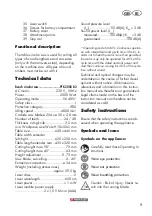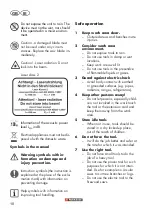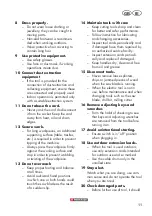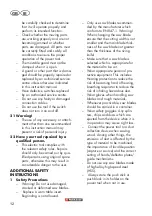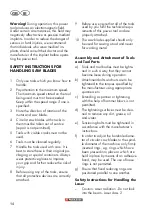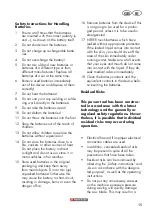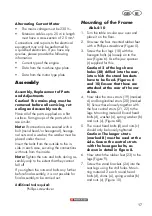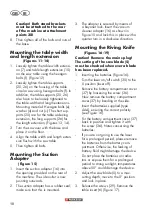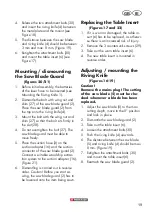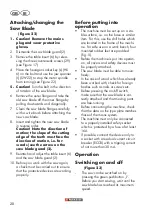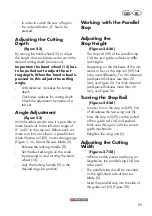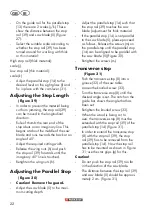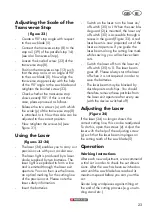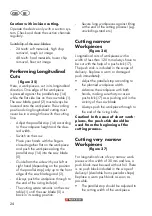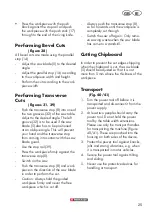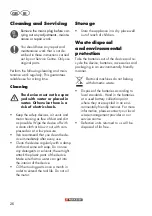
1 1
G B
I E
8 Dress properly.
– Do not wear loose clothing or
jewellery, they can be caught in
moving parts.
– Non-skid footwear is recommen-
ded when working outdoors.
– Wear protective hair covering to
contain long hair.
9 Use protective equipment.
– Use safety glasses.
– Use face or dust mask if working
operations create dust.
10 Connect dust extraction
equipment
– If the tool is provided for the
connection of dust extraction and
collecting equipment, ensure these
are connected and properly used.
– Indoor operation is permitted only
with a suitable extraction system.
11 Do not abuse the cord.
– Never yank the cord do disconnect
it from the socket. Keep the cord
away from heat, oil and sham
edges.
12 Secure work.
– For long workpieces, an additional
supporting surface (table, trestles,
etc.) is required in order to prevent
tipping of the machine.
– Always press the workpiece firmly
against the working surface and
stop in order to prevent wobbling
or twisting of the workpiece.
13 Do not overreach
– Keep proper footing and balance
at all times.
– Avoid awkward hand positions
in which one or both hands could
touch the saw blade as the result
of a sudden slip.
14 Maintain tools with care
– Keep cutting tools sharp and clean
for better and safer performance.
– Follow instruction for lubricating
and changing accessories.
– Inspect tool cords periodically and
if damaged have them repaired by
an authorized service facility.
– Inspect extension cords periodi-
cally and replace if damaged.
– Keep handles dry, clean and free
from oil and grease.
15 Disconnect tools.
– Never remove loose splinters,
chips or jammed pieces of wood
when the saw blade is running.
– When the electric tool is not in
use, before maintenance and when
changing tools such as the saw
blade, drill bit, milling cutter.
16 Remove adjusting keys and
wrenches
– Form the habit of checking to see
that keys and adjusting wrenches
are removed from the tool before
turning it on.
17 Avoid unintentional starting.
– Ensure switch is in “off” position
when plugging in.
18 Use outdoor extension leads.
– When the tool is used outdoors,
use only extension cords intended
for outdoor use and so marked.
– Use the cable drum only in the
unrolled state.
19 Stay alert.
Watch what you are doing, use com-
mon sense and do not operate the tool
when you are tired.
20 Check damaged parts.
– Before further use of tool, it should


